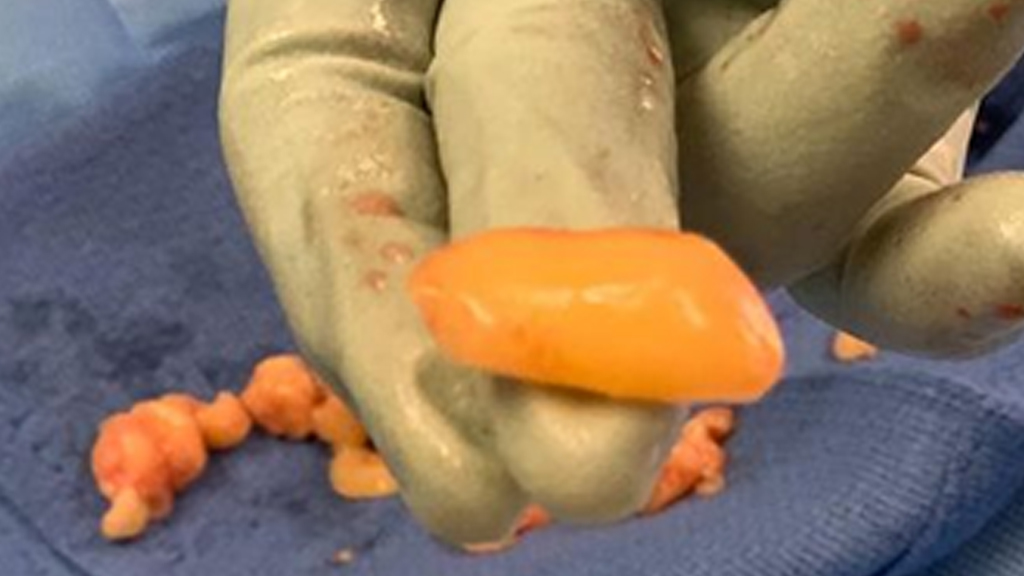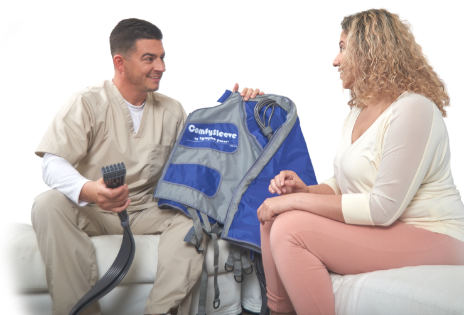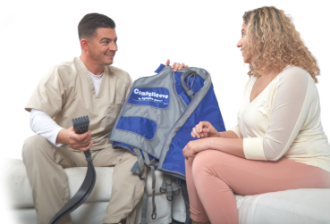An Interview with Dr. Jaime Schwartz of Total Lipedema Care
Dr. Jaime Schwartz is a board-certified plastic surgeon and world-renowned lipedema specialist who has dedicated much of his career to raising awareness for fat disorders such as lipedema. Lipedema is often underdiagnosed and misdiagnosed as morbid obesity. He is known for taking on complex lipedema cases and giving patients hope by alleviating the pain from this disorder.
Dr. Schwartz’s innovative techniques to relieve the pain and pressure of lipedema attract patients seeking his help from all over the world. Currently, Dr. Schwartz leads the team at Total Lipedema Care in Beverly Hills, California.
As this article explains, his expertise is focused on Manual Lipedema Extraction™️ to remove the nodules common in lipedema patients. In doing this, inflammation that is notorious with lipedema is reduced – a key to eliminating painful, stubborn fat in his patients.
A Chance Meeting with Lipedema: How Dr. Schwartz Became an Expert
Dr. Jaime Schwartz began his career in plastic surgery. He accepted a recruitment offer in California from Presbyterian Intercommunity Hospital (PIH) where he became Chief of Plastic Surgery.
There, Dr. Schwartz built the plastic surgery department and breast reconstruction program from the ground up. From the beginning, Dr. Schwartz was able to innovate the department to provide the best care possible for patients.
“I learned that it’s actually better [for insurance] to treat people with weight loss bypass than it is to pay for diabetes and high blood pressure,” Dr. Schwartz said. “And not just for insurance. It’s better and safer for the patient.”
The problem, however, was that PIH had no gastric bypass surgeons. They had only an endocrinologist who worked in medical weight loss management.
Undeterred, Dr. Schwartz and the endocrinologist teamed up to find a solution. He began performing large volume liposuction to the abdomen as an alternative to gastric bypass surgeries.
“It allowed patients to kind of move on,” Dr. Schwartz said. “We found that it worked really well. When you take out the weight, it jump-starts the patients in a lot of ways. Of course, they have to be moving; they have to be active to keep it up. They can’t stay in bed all the time.”
That’s when Dr. Schwartz grew curious about a pattern he noticed. Overall, the program was a roaring success, but there were a few outliers who didn’t do as well.
“We found a lot of people were losing a ton of weight, which was great,” he said. “But we had a subset of people that really weren’t losing any weight in their legs or arms.”
That was when he learned more about lipedema. Not long after, a friend introduced him to endocrinologist and lipedema specialist Dr. Karen Herbst. The two began working together, challenging each other, and developing solutions for the undertreated condition.
Dr. Herbst is now a part of the Total Lipedema Care team. With the added benefit of her research expertise, patients are receiving even better care.
Going Directly to the Epicenter of Pain
One of Dr. Schwartz’s most important contributions to lipedema treatment is the specialized liposuction he performs, which is focused on the removal of painful fat nodules.
The lipedema fat nodules are what Dr. Schwartz refers to as the “epicenter” of lipedema-related pain. Many other operations offered to lipedema patients don’t focus on the nodules and aren’t just less effective. He says “they’re not even in the same ballpark.”
His belief? “If you don’t remove the nodules, you’re not truly helping people. Even if a couple of liters are removed through liposuction, if the nodule isn’t treated, lipedema isn’t treated.”
Dr. Schwartz emphasizes that it is critical to understand why a patient is in pain, which is why his approach to liposuction is more targeted. Contrary to what is often assumed, it’s not just a matter of “sucking out some layers of fat.”
Battling a Resistant Establishment
One of Dr. Schwartz’s most important roles are as a patient advocate and “guardian angel.” Lipedema patients repeatedly encounter healthcare system barriers that prevent them from receiving proper care, often leaving them frustrated and hopeless.
Dr. Schwartz aims to change that.
The very nature of lipedema treatment itself can often be an obstruction for patients. Insurance companies will often hear the word “liposuction” and deny the procedure as unnecessary or purely cosmetic. Meanwhile, patients remain bedridden, forced to avoid physical contact, and unable to even walk to their mailboxes because of the pain.
Dr. Schwartz uses careful and calculated language with insurance companies, medical directors, and even other doctors. He conveys the simple idea that his patients deserve this critical treatment for their life-altering condition.
“I wind up calling them personally to talk to them,” he said. “It’s more of an education thing and requires a higher level of communication to help the insurance companies understand the difference.”
A Different Kind of Surgery: Lipedema Reduction Surgery
There are three components to what Dr. Schwartz refers to as the way to treat lipedema:
- Rather than using the term liposuction for his Manual Lipedema Extraction™️, he chooses to refer to the removal of nodules common in lipedema patients as “lipedema reduction surgery.”
- Also unique is his “larger surgery” approach. In other practices, it might be common for three surgeries on a single body part to be performed over the course of 12 weeks, which can be cost-prohibitive. Dr. Schwartz prefers a larger area to be addressed in surgery. While recovery may be more challenging, when done correctly, no further surgeries on the area should be required.
- It is not uncommon for Dr. Schwartz to perform revision surgery on patients who previously had inadequate liposuction. “Understanding the individual areas being operated on is key. A lipedema patient needing surgery on the stomach or the legs deserves a surgeon with a keen awareness of the intricacies of each anatomic area within the body.”
For these reasons he believes the more common label “liposuction” doesn’t do justice to the surgery he performs and why he refers to this careful surgery as lipedema reduction surgery.

Gratifying and Hopeful Results
Dr. Schwartz takes on many of the most challenging cases of lipedema. He encourages all lipedema patients to seek treatment as early as possible. Also, he recommends pneumatic compression to stabilize lipedema, making a potential future surgery easier to achieve.
If left untreated, lipedema can progressively diminish the softness of skin, mobility, self-esteem, and the quality of a patient’s life. Because global learning about lipedema is still occurring within the medical community, he feels that the sooner a patient seeks help, the better.
Sometimes, stories come back to Dr. Schwartz from patients who claim they couldn’t walk a mile due to pain before surgery. Now they can walk four miles, pain-free. That’s what makes all of his research and hard work so gratifying.
About Dr. Jaime Schwartz
Dr. Schwartz is committed to the care of lipedema patients in all stages and types of this fat disorder, also known as painful fat syndrome. Dr. Schwartz and Total Lipedema Care work in collaboration with some of the world’s leading researchers and endocrinologists who have dedicated their entire careers to the study of congenital and genetic fat disorders in men and women. Through Dr. Schwartz’s collaborative research, he educates other doctors on how to examine fat and to identify adipose disorders instead of diagnosing it as morbid obesity. Dr. Schwartz earned a Bachelor of Science in cellular and molecular biology from Tulane University prior to graduating from Georgetown University’s School of Medicine.



